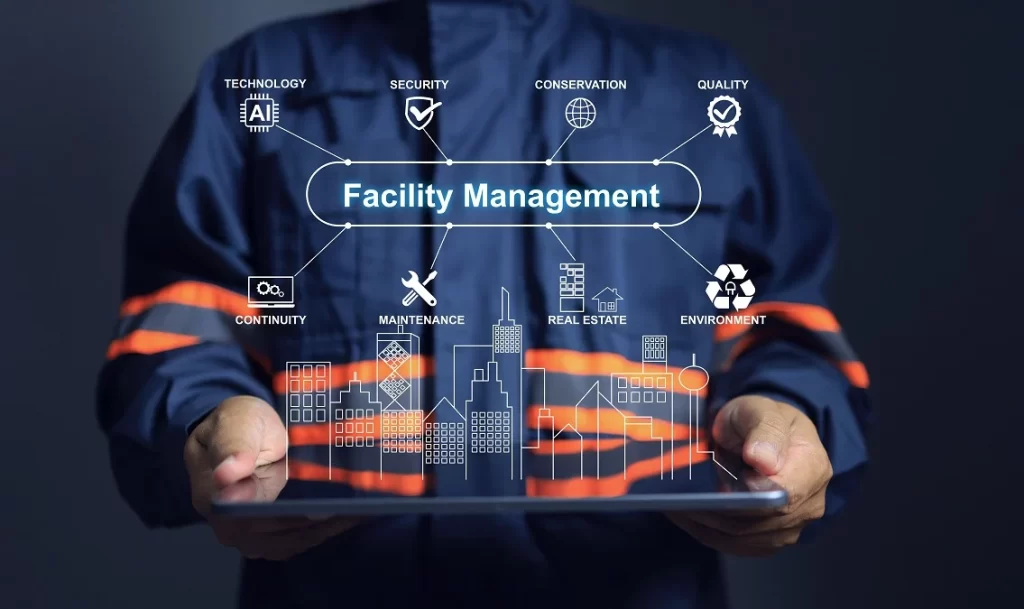Facility management software has become an essential tool for businesses and organizations of all sizes. From small companies to massive enterprises, the need to manage facilities efficiently has led to a surge in the use of advanced software solutions. This guide will walk you through everything you need to know about facility management software, how it benefits businesses, and why investing in the right software can save time and money.
What is Facility Management Software?
facility software is a digital tool designed to help organizations manage their facilities and assets efficiently. This type of software includes features like maintenance scheduling, asset tracking, work order management, and space management. The software aims to simplify the complex task of overseeing facility operations, allowing facility managers to make informed decisions that improve productivity and reduce costs.
Facility software is often integrated with other business tools, making it an essential part of an organization’s overall management strategy. Whether you run a single office or a chain of properties, facility software helps keep everything organized and running smoothly, much like an “adventure capitalist” wisely managing investments to maximize returns.
Key Features of Facility Management Software
When evaluating facility management software, it’s essential to understand the key features that make these tools effective. Here are some of the standout features to look for:
1. Work Order Management
Work order management is a core feature of any good facility management software. This feature allows facility managers to create, assign, and track work orders for repairs, maintenance, and inspections. It ensures that tasks are handled promptly and nothing falls through the cracks. For example, if you need a repair in one of your buildings, the software can automatically generate a work order, assign it to a technician, and track its progress until completion.
2. Asset Management
Tracking and managing assets can be a headache without the right tools. Facility software allows managers to keep an accurate inventory of assets, monitor their condition, and schedule maintenance or replacements as needed. Asset management features help extend the lifespan of equipment and reduce downtime, leading to cost savings in the long run.
3. Space Management
Optimizing the use of space within a facility is another critical component of facility management. Facility management software often includes tools to manage and allocate space efficiently, ensuring that every square foot is utilized effectively. This is particularly useful for companies with multiple locations or large campuses.
4. Maintenance Scheduling
Regular maintenance is crucial to keeping a facility running smoothly. Facility software can automate maintenance schedules, send reminders, and provide detailed reports on completed tasks. This proactive approach prevents small issues from escalating into major problems, saving both time and money.
5. Reporting and Analytics
Facility management software provides robust reporting and analytics tools to help managers make data-driven decisions. Detailed reports on work orders, asset performance, space utilization, and costs enable facility managers to identify trends, pinpoint inefficiencies, and strategize improvements.
Benefits of Using Facility Management Software
Investing in facility management software offers a multitude of benefits that enhance the overall operation of a facility. Let’s explore some of the key advantages:
1. Increased Efficiency and Productivity
One of the biggest benefits of facility software is its ability to automate routine tasks, allowing facility managers to focus on more strategic responsibilities. Automating tasks like maintenance scheduling and work order tracking significantly improves efficiency, ensuring that the facility operates smoothly.
2. Cost Savings
Effective facility management software helps reduce costs by optimizing resources and preventing unnecessary repairs. Asset management tools extend the life of equipment, while maintenance scheduling ensures that machinery and infrastructure are serviced at the right intervals, avoiding expensive breakdowns.
3. Improved Communication
Many facility management software solutions include communication tools that make it easier for facility managers, technicians, and stakeholders to stay connected. This improved communication ensures that everyone involved is on the same page, reducing the chances of miscommunication and errors.
4. Better Decision-Making
Data is at the core of any successful management strategy. Facility software provides detailed analytics that enables facility managers to make informed decisions based on accurate data. Whether it’s choosing the right time for maintenance, assessing space utilization, or budgeting for upgrades, data-driven decisions lead to better outcomes.
5. Enhanced Asset Lifecycle Management
Proper asset management is essential to maximizing return on investment. Facility software helps in tracking asset conditions, maintenance history, Facility Maintenance Management System and performance metrics, allowing managers to predict when replacements are necessary and avoid unexpected failures.
How to Choose the Right Facility Management Software
Selecting the right facility management software is crucial to reaping its benefits. Here are some tips to help you make the right choice:
1. Define Your Needs
Start by identifying the specific needs of your facility. Do you need software primarily for maintenance management, or are you looking for a comprehensive solution that includes space management and asset tracking? Understanding your needs will help you narrow down your options.
2. Consider Integration Capabilities
Facility software should seamlessly integrate with other systems you already use, such as accounting software, project management tools, or IoT devices. Integration capabilities enhance the software’s functionality and reduce the need for manual data entry.
3. Look for User-Friendly Interfaces
The best software is intuitive and easy to navigate. A user-friendly interface ensures that your team can quickly adapt to the software without extensive training. Test the software’s demo or trial version to get a feel for its usability.
4. Prioritize Customization and Scalability
Choose software that can be tailored to your specific requirements and can grow with your organization. Customization options ensure that the software fits your workflow, while scalability means you won’t have to switch systems as your business expands.
5. Check Customer Support and Training
Quality customer support and training resources are essential, especially if you’re new to facility management software. Look for providers that offer comprehensive training, tutorials, and responsive customer support to help you get the most out of the software.
Top Facility Management Software Options in 2024
Here’s a look at some of the best facility management software solutions currently available:
1. FMX
FMX is known for its user-friendly interface and robust work order management capabilities. It’s an excellent choice for small to medium-sized businesses looking for an affordable yet powerful solution.
2. UpKeep
UpKeep offers a mobile-first solution, making it ideal for field technicians who need access to data on the go. Its asset management and maintenance scheduling features are top-notch, providing an all-in-one solution for facility management.
3. Hippo CMMS
Hippo CMMS is a cloud-based facility software that focuses on asset management and preventive maintenance. It’s easy to set up and provides comprehensive reporting features, making it a favorite among facility managers.
Conclusion: Why Facility Management Software is a Game-Changer
facility management software is more than just a tool—it’s a strategic asset that transforms the way organizations manage their facilities. By automating routine tasks, providing valuable insights, and improving communication, facility software enables businesses to operate more efficiently and save costs. Whether you’re a small business owner or an “adventure capitalist” overseeing a massive portfolio of properties, investing in the right facility management software can significantly enhance your operations.






